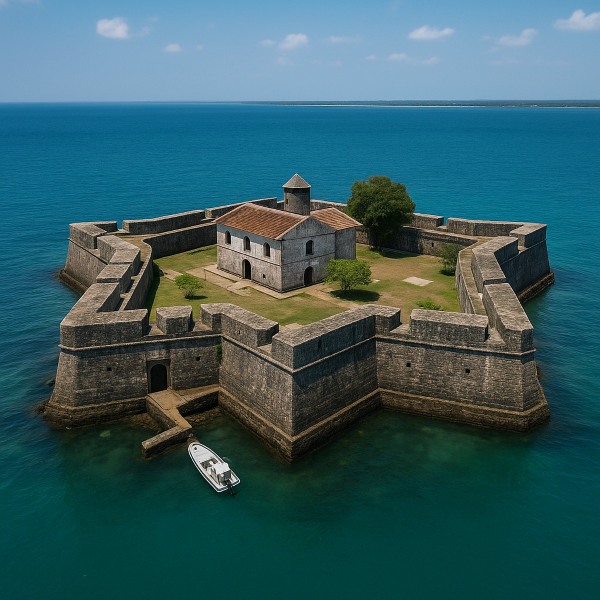The Glory of Fort Hammenhiel – An Island Sentinel of Sri Lanka’s Colonial Past – By Malsha – eLanka
Image Source : dailynews
Tucked away in the Palk Strait, between the Jaffna Peninsula and the island of Karaitivu in northern Sri Lanka, lies Fort Hammenhiel, a striking sentinel of stone and history. Built on a small rocky islet, this compact but formidable fort has witnessed centuries of maritime conflict, colonial ambition, and later, national transformation.
Origins in Stone and Strategy
Fort Hammenhiel was originally constructed by the Portuguese in the early 17th century, during their occupation of the coastal regions of Sri Lanka. Recognizing the strategic importance of this tiny islet near the entrance of Jaffna Lagoon, the Portuguese built a small fortification to guard against naval invasions and secure their hold over the Jaffna Kingdom.
However, in 1658, the Dutch East India Company wrested control of the north from the Portuguese. They reinforced and restructured the fort, transforming it into a robust, star-shaped military outpost, with thick granite walls, angular bastions, and a moat-like sea boundary that made it nearly impenetrable from attack. The fort was named “Hammenhiel” – translated from Dutch as “Heel of the Ham,” referring to its location at the ‘heel’ of the Jaffna peninsula, resembling a ham in shape.
An Architectural Relic of Three Colonizers
Though small in size compared to southern counterparts like Galle or Colombo Fort, Hammenhiel is a rare example of combined colonial military architecture. The Portuguese laid the foundation, the Dutch fortified it, and when the British took over in the late 18th century, they used the fort mainly as a quarantine station and later a prison.
Its thick walls and circular design allowed it to withstand cannon fire and harsh oceanic winds. The view from the battlements offers an unobstructed panorama of the Palk Strait, a reminder of the fort’s tactical value during Sri Lanka’s colonial wars.
From Prison to Paradise
After independence, the Sri Lankan government utilized the fort as a naval prison and later as a detention center for political prisoners during various stages of the country’s turbulent post-colonial era. But in a turn of fate befitting its romantic location, Fort Hammenhiel was eventually converted into a naval-run tourist hotel under the Sri Lanka Navy.
Today, visitors can book a stay at the fort and enjoy a blend of history, serenity, and adventure, surrounded by the calm waters of the lagoon. Accessible only by boat from Karainagar, it offers a truly immersive experience into the past, with rooms retaining their colonial-era design yet outfitted with modern comforts.
A Living Monument
Fort Hammenhiel stands not just as a reminder of Sri Lanka’s colonial trials, but as a symbol of resilience and adaptation. Once a bastion of foreign rule, later a prison of rebellion, it now serves as a peaceful retreat for travelers interested in the island’s rich, layered history.
Whether you’re a history enthusiast, an architecture admirer, or a curious traveler seeking a unique getaway, Fort Hammenhiel offers a journey back in time — a glorious testament to the endurance of stone, sea, and spirit.
























